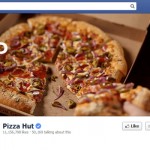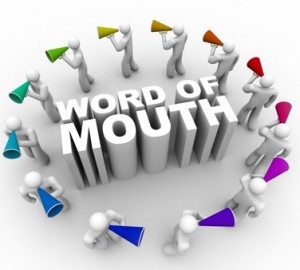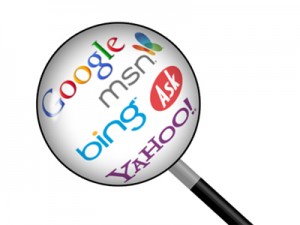For many small businesses marketing isn’t of the highest importance. First of all you want to create a product of value then you need to consider assets, overheads and employees. Marketing tends to be left behind. This is where Facebook can greatly benefit you. If you do not have a vast marketing budget Facebook and other social media can provide very cheap marketing and can help you increase the awareness of your brand.
Facebook has over 25 million active small business pages (Sterling, 2013) and with over 890 million daily users (Statista, 2014), Facebook provides the perfect opportunity for businesses to locate their customers.
A Facebook business page can help you reach all of the people who matter most to your business. However before you create a Facebook page there are a few things you need to consider:
It sounds so simple but many businesses create pages without having a desired outcome. So what do you want to get from your page? Increase brand awareness, have users click through to your website or increase sales. The objective needs to be solidified and obvious, this will ensure the consistent running of the page.
- How will you measure the success of the page?
Consider what metrics are important to your objective. Is the click through rate important? Do you want to consider cost per like to ensure it is financial stable? Having metrics in place will allow you to evaluate your business page.
- Identify your audience
Think who your target market is and how you can specifically tailor your business page to their needs. What demographics are you assessing; are you targeting by location, their interests, their age?
One of the hardest tasks being a small business is actually reaching the consumer. For a business page to be successful it needs to have ‘likes’ the more likes it has the more news feeds it appears on and the more accessible it is to the consumer.
There are many ways to increase ‘likes’, Facebook Ads is a great way to build your brand. The Facebook Ads will appear on people’s homepage regardless if they have liked your page or not (Serna, 2013). The ad will need to be inviting so to encourage people to click on it to increase traffic to your site. The cost per click rate for Facebook Ads is just $0.45 and retail advertisers experience a 152% return on investment (Jones, 2013). Facebook Ads compliment the business page and with Facebook Ads you can take advantage of the extensive Facebook adverts manager will allows you even more metrics to evaluate the performance.
For other ways to increase the number of likes http://blog.wishpond.com/post/52815764009/7-ways-to-increase-your-facebook-likes-guide/.
Before you publish a page you need to ensure that the initial content is interesting and attractive. Take advantage of the cover photo to let the consumer know a bit more about the brand, have the admins already locked in and the first few posts already stored. This will make the first few weeks easier and will give you the opportunity to maximise potential followers. Pizza Hut are a good example of a company with a good like page, their cover photo is inviting and immediately tells the consumer what they are about.
Once you have a following you need to ensure they remain loyal to your page. To do this you must engage the audience. Frequent updates with fresh content is vital to success. Use the business page to offer unique promotions, or run competitions to increase engagement. If you are connected to the consumer they will become more brand loyal.
Nutella consistently update their page with organic posts and competitions to keep their users engaged, to see for yourself check out their page https://www.facebook.com/nutellauk?brand_redir=1.
The business page encourages ideas to be discussed, take advantage of this. Listen to what the consumer is saying, and show that you care about them by being responsive. By listening to how the consumer really feels it will provide you with feedback so you can improve on the next campaign.
Here is an article on the top 10 small business Facebook pages, they specify what each company does well http://www.socialmediaexaminer.com/top-10-small-business-facebook-pages-2012-winners/.
In summary to have a successful Facebook business page; know your objective and determine your metrics, gain a strong following from your target market and keep the user engaged with regularly consistent posts
References
Jones, K. (2013) Retail Advertisers on Facebook Average 152% ROI; 162% ROI on iOS, Search Engine Journal. 19 October 2013 [Online] <http://www.searchenginejournal.com/retail-advertisers-facebook-average-152-roi-162-roi-ios/73911/> [Accessed 15 April 2015]
Statista (2014) Number of daily active Facebook users worldwide as of 4th quarter 2014 (in millions) [Online] <http://www.statista.com/statistics/346167/facebook-global-dau/> [Accessed 16 April 2015]
Serna, A. (2013) Facebook Ads Explained, Slide Share. 31 May 2013 [Online] <http://www.slideshare.net/adriserna28/facebook-ads-explained> [Accessed 16 April 2015]
Sterling, G. (2013) Facebook: We have 25 million active small business pages, Marketing Land. 18 November 2013 [Online] <http://marketingland.com/facebook-we-have-25-million-active-small-business-pages-65629> [Accessed 16 April 2015]













 93% of online experiences begin with a search engine
93% of online experiences begin with a search engine ost significant key words at the front of your website. Think about the categories and then sub-categories that you target audience is, this will narrow down the competition and result in more chance of you being found.
ost significant key words at the front of your website. Think about the categories and then sub-categories that you target audience is, this will narrow down the competition and result in more chance of you being found.












